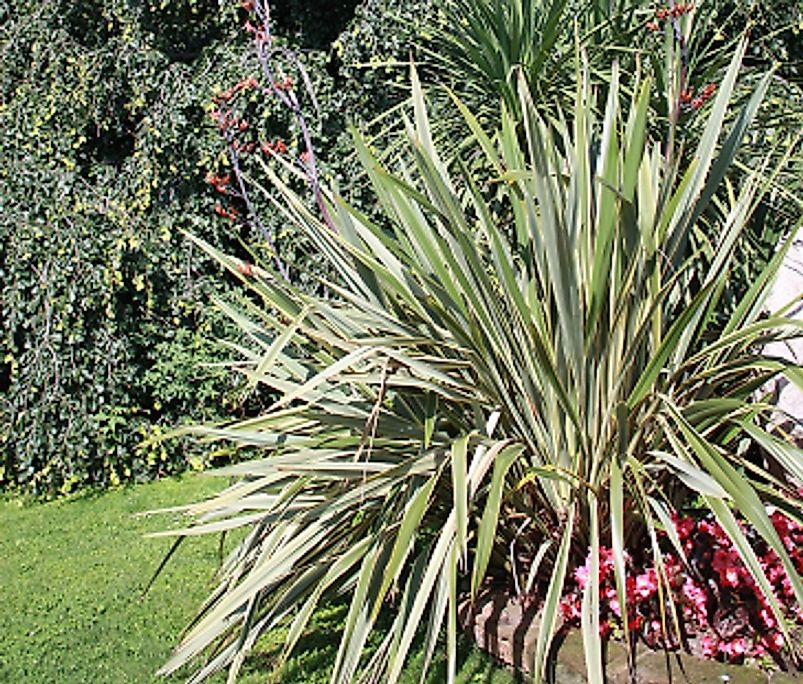What Is Sisal (Agave sisalana)?

Plant Description and Life Cycle
Sisal (Agave sisalana) is a species of plants belonging to the Asparagaceae Family, and one whose leaf-derived fibers are regarded as among the most commercially important plant fibers. The Sisal is a short plant with a height of about 0.9 meters and a stalk diameter of around 38 centimeters. The gray to dark green, 0.6 to 1.8 meter-long, fleshy, lance-shaped leaves of the plant branch out in the form of rosettes from the main stalk. The plant starts flowering within 4 to 8 years of planting, and yellow flowers with an unpleasant odor are grown on its branches, arising from a tall, central, flower stalk. The axillary buds of the plant soon develop into bulbils. These tiny bulbs fall to the ground, grow roots, and starts developing into independent plants of their own. Meanwhile, older Sisal plants wither away and die after completing a life span that generally lasts 7 to 10 years.
Where Sisal is Found
The sisal plant is a native of Mexico and other parts of Central America. Evidence implies that the plant was used by Aztec and Mayan civilizations to make crude fabrics. In the modern world, cultivation of the plant became highly popular during the 19th Century, and by the early 20th Century sisal cultivation had become a common practice in a number of African, South American, Southeast Asian, and South Asian nations.
Cultivation and Production
Sisal is propagated from bulbils or rhizomes, and the young saplings are first grown in nurseries for about 12 to 18 months. After this time they are planted into the large crop fields, usually towards the beginning of the rainy season. The plants mature in about 3 to 5 years, and remain viable and productive for the next 7 to 8 years. Around 300 leaves are obtained from each plant during the entire productive period. The fiber is extracted from the Sisal leaves by a process of decortication. The extracted fiber is then dried, either under the sun or dried by artificial means. These dried fiber are then brushed and baled and sent for further processing and export. Sisal fiber production accounts for 2% of the world’s plant-based fiber production. 281,000 metric tons of sisal fiber were produced in 2013 worldwide, with Brazil alone producing nearly 150,584 metric tons of this fiber. Tanzania, Kenya, Madagascar, and China were the other leading producers of sisal fiber during that same year.
Uses and Applications
The sisal fiber is highly durable, stretchable, strong, and resistant to saltwater. The higher grade sisal fibers are used to make yarn for carpet weaving. Moderate grade fibers are deemed suitable for use in making marine, shipping, agricultural, and industrial ropes and twines, while lower grade sisal fibers are processed by the paper manufacturing industries to make paper products. A variety of other products involving the use of sisal fibers include rugs, slippers, spa products, and cat scratching posts. Sisal is also used as a reinforcement in polymer composites like plastic and rubber, and these are used in the manufacture of automobiles, boats, and water tanks. The by-products of the sisal fiber processing industry are often utilized as livestock feed or fertilizers, as well as for the production of bio-gas, pharmaceutical products, and building materials.
Environmental Significance
Sisal has immense future potential to act as a renewable resource, and as such to be a part of the global solution plan for arresting climate change. Sisal plants trap more carbon dioxide that they produce, and the waste generated from the sisal fiber processing industry is completely biodegradable, and can be utilized to produce biogas, animal feed, and natural fertilizers. The extensive root systems of the plant also protect soil against erosion, and withholds water within the soil. These plants can be grown along the edges of other crops' fields as well to bar the entry of insect and animal pests into the fields.











